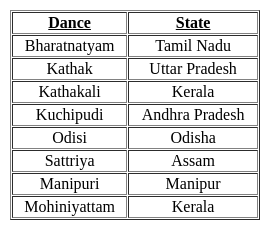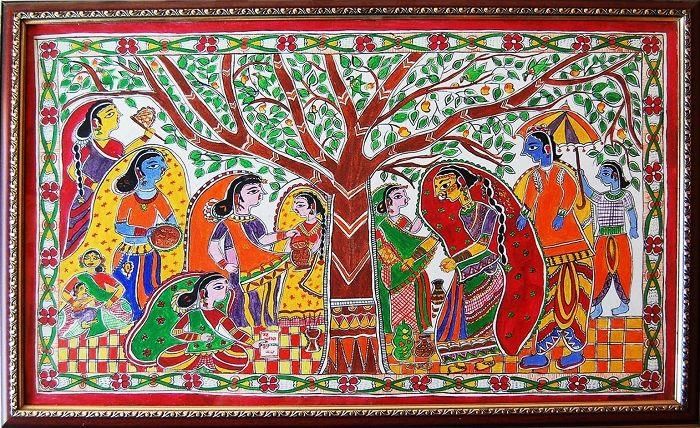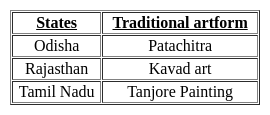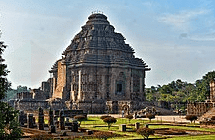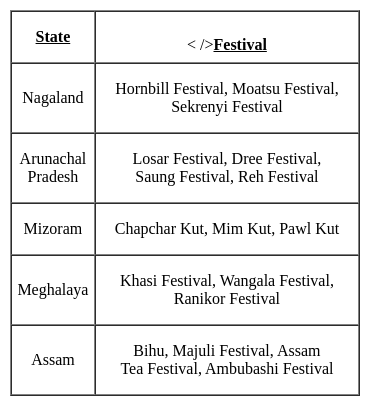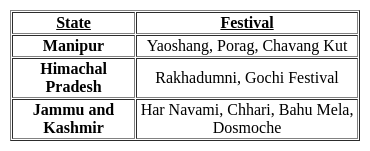Software Development Exam > Software Development Tests > Test: General Awareness (Art & Culture) - Software Development MCQ
Test: General Awareness (Art & Culture) - Software Development MCQ
Test Description
10 Questions MCQ Test - Test: General Awareness (Art & Culture)
Test: General Awareness (Art & Culture) for Software Development 2025 is part of Software Development preparation. The Test: General Awareness (Art & Culture) questions and answers have been prepared
according to the Software Development exam syllabus.The Test: General Awareness (Art & Culture) MCQs are made for Software Development 2025 Exam.
Find important definitions, questions, notes, meanings, examples, exercises, MCQs and online tests for Test: General Awareness (Art & Culture) below.
Solutions of Test: General Awareness (Art & Culture) questions in English are available as part of our course for Software Development & Test: General Awareness (Art & Culture) solutions in
Hindi for Software Development course.
Download more important topics, notes, lectures and mock test series for Software Development Exam by signing up for free. Attempt Test: General Awareness (Art & Culture) | 10 questions in 10 minutes | Mock test for Software Development preparation | Free important questions MCQ to study for Software Development Exam | Download free PDF with solutions
Test: General Awareness (Art & Culture) - Question 1
Which is the first temple that was built by Emperor Ashoka?
Detailed Solution for Test: General Awareness (Art & Culture) - Question 1
Detailed Solution for Test: General Awareness (Art & Culture) - Question 2
Test: General Awareness (Art & Culture) - Question 3
Madhubani, a style of folk paintings, is popular in which of the following states in India?
Detailed Solution for Test: General Awareness (Art & Culture) - Question 3
Test: General Awareness (Art & Culture) - Question 4
Who is known as the founder of Modern Carnatic music?
Detailed Solution for Test: General Awareness (Art & Culture) - Question 4
Test: General Awareness (Art & Culture) - Question 5
Which Mughal ruler constructed a new city called as Din Panah on the bank of Yamuna river?
Detailed Solution for Test: General Awareness (Art & Culture) - Question 5
Test: General Awareness (Art & Culture) - Question 6
Which caves are known for their Indian rock-cut architecture?
Detailed Solution for Test: General Awareness (Art & Culture) - Question 6
Test: General Awareness (Art & Culture) - Question 7
Which world heritage site was built by king Narasimhadeva I of the Eastern Ganga Dynasty?
Detailed Solution for Test: General Awareness (Art & Culture) - Question 7
Test: General Awareness (Art & Culture) - Question 8
Hamzanama paintings were produced during the reign of?
Detailed Solution for Test: General Awareness (Art & Culture) - Question 8
Test: General Awareness (Art & Culture) - Question 9
In which of the following states of India is the Moatsu festival celebrated?
Detailed Solution for Test: General Awareness (Art & Culture) - Question 9
Test: General Awareness (Art & Culture) - Question 10
The Hemis festival is celebrated in the state/union territory of:
Detailed Solution for Test: General Awareness (Art & Culture) - Question 10
Information about Test: General Awareness (Art & Culture) Page
In this test you can find the Exam questions for Test: General Awareness (Art & Culture) solved & explained in the simplest way possible.
Besides giving Questions and answers for Test: General Awareness (Art & Culture), EduRev gives you an ample number of Online tests for practice
Download as PDF


